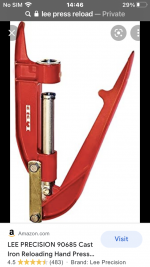I realize that new brass benefits from fireforming to your chamber, using a medium load that does not blow out the primer pocket on the first firing. The first firing hardens the case head and buys you longer brass life.
My question is how do you decide on the powder load for fire forming: Two grains above book minimum or two of three grains below book max?
Also: Do you guys measure the expansion in the web diameter, using a micrometer that can read accurately down to 0.1 thou? Measure before you FL resize or after? That seems to change the measurement by 1-1.5 thou.
How much web expansion do you expect to see on the first firing, and how much on subsequent firings? What is too much?
Idea being that we figure out how fast we can run, and still allow the LRP primer pockets to survive at least 8-10 reloads. Using Norma and Nosler brass in 300 WSM. So Lapua/ADG/Peterson are not available.
One trick i read about is to take a set of pre-weighed containers of powder to the range, say 2.0 grains apart (like 64.0, 66.0, 68.0 gn), starting middle of range, and sacrifice one case by loading it with successively higher powder loads at the range until [Edit:] the primer gets way too easy to seat (or falls out after seating). [I guess the benefit of using the same case is that you can feel how primer seating force reduced at every reload, and all of this is of course done in one trip to the range. And you lose one case in the process, not multiple cases.] Presumably using a neck sizer and an arbor press, and a priming tool. Has anybody tried that? [Not recommending this to anybody, and i agree it sounds rather unsafe!]
My question is how do you decide on the powder load for fire forming: Two grains above book minimum or two of three grains below book max?
Also: Do you guys measure the expansion in the web diameter, using a micrometer that can read accurately down to 0.1 thou? Measure before you FL resize or after? That seems to change the measurement by 1-1.5 thou.
How much web expansion do you expect to see on the first firing, and how much on subsequent firings? What is too much?
Idea being that we figure out how fast we can run, and still allow the LRP primer pockets to survive at least 8-10 reloads. Using Norma and Nosler brass in 300 WSM. So Lapua/ADG/Peterson are not available.
One trick i read about is to take a set of pre-weighed containers of powder to the range, say 2.0 grains apart (like 64.0, 66.0, 68.0 gn), starting middle of range, and sacrifice one case by loading it with successively higher powder loads at the range until [Edit:] the primer gets way too easy to seat (or falls out after seating). [I guess the benefit of using the same case is that you can feel how primer seating force reduced at every reload, and all of this is of course done in one trip to the range. And you lose one case in the process, not multiple cases.] Presumably using a neck sizer and an arbor press, and a priming tool. Has anybody tried that? [Not recommending this to anybody, and i agree it sounds rather unsafe!]
Last edited:






